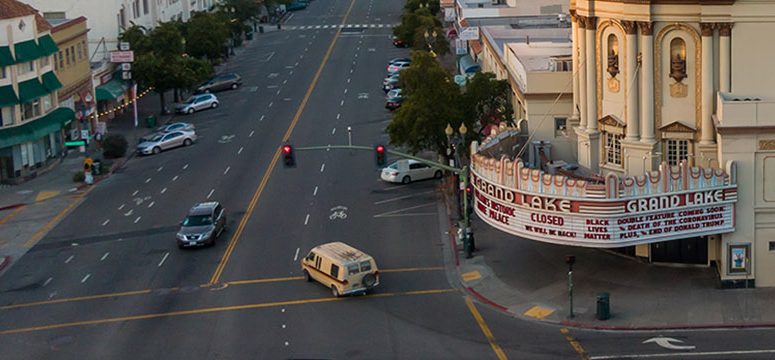City engineer Michael Sacuskie took these photos of the construction on the new buffered bike lanes and road diet in Modesto, and as you can see people are already using them, even though they won't be finished for another month or so. The project includes a road diet on College Avenue and buffered bike lanes that will connect two campuses of Modesto Junior College to the rest of Modesto's growing bike network.
These aren't the first two-way buffered bike lanes in the state, but they're close. Not very many California cities have anything quite like these ones. Parts of them are parking-protected, and parts include cement bumpers to keep cars out of the lane.

Modesto Mayor Garrad Marsh's website gives ten reasons why the realignment is a good idea. Among them is that “a significant portion of our residents” do not own cars--between 20 and 25 percent, says the mayor in an accompanying video interview. “They use public transit, but they should also be able to use their bicycles,” he says.

Other reasons this project is a good idea, as spelled out by the mayor: the road diet can easily accommodate many more cars than the number that currently use College Avenue, the cost of the project has been minimal, and future maintenance costs will be cut because cars will be driving on less of the road surface.

There has been very high support for the project in the public workshops held to discuss it, which started, said the mayor, “as a neighborhood request.”
It is also consistent with the city's master plan, which calls for bike and pedestrian improvements whenever streets are repaved.
“By only building for cars, cities make it too dangerous to bike in communities like we used to generations before. It's better for our bodies, and our communities, and our environment to provide more safety in biking,” March writes.
Marsh faces four opponents in a November reelection bid for mayor. It's great to see a campaign relying in part on the strengths of a good bicycle and pedestrian project. This is especially true for the Central Valley, where attention to the needs of people who don't drive has been thin.










